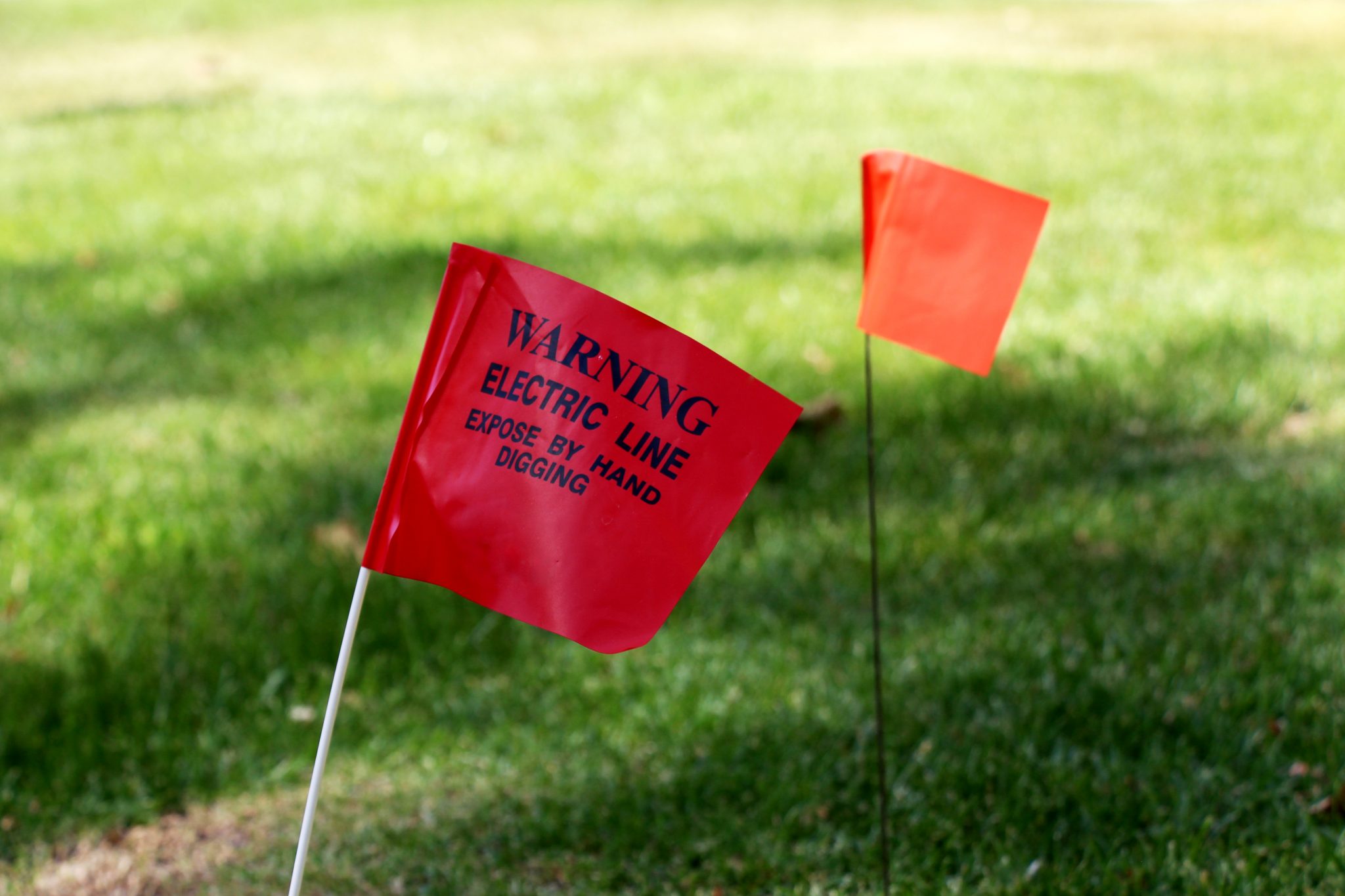Play it Safe Around Electricity

Downed power lines and unsafe use of electricity can cause serious injury. To make sure your family is safe, review basic electrical safety rules each year. Respecting electricity is the best way to prevent injuries and fires.
- > Keep away from broken or fallen power lines, at least 100 feet.
- > Report downed power lines to an adult and call the police and the electric company immediately, they will tell you when it is safe to play outside again.
- > Stay away from high voltage areas. Power poles, high voltage towers, transformers and substations are dangerous.
- > Do not touch the electric meter outside your home.
Digging Safely

Marker Flags
- > Every state has a system of marking property with colored flags or paint to show the location of underground cables or pipelines.
- > These flags are color-coded for the type of pipelines they mark.
- > Electric lines are marked with red flags.
- > All marker flags have an important job to do, such as marking the underground cables and pipelines that bring us natural gas, water, cable TV, etc.
- > We should never move them, take them out or dig near them.
- > Call 811 before you dig!
What to Do About a Downed Power Line

Always stay away from downed power lines.
Call the utility company as soon as possible to have them fixed.
Your utility representative will let you know when it is safe again.
- Avoid power lines:
- > Look up when playing outside.
- > Do not climb trees that have power lines running through them.
- > Keep ladders away from power lines.
- > Never fly kites near power lines and do not attempt to remove a kite tangled in a power line.
- Do not fly kites in thunderstorms.
- Keep away from water, especially swimming in pools, during thunderstorms.
- Go inside until the thunderstorm is gone.
What to Do in Cases of Electric Shock
Scenario 1:
If the victim is in contact with electric power lines, the only safe action is to call the power company.
Scenario 2:
If the victim is in contact with a low voltage cord, use a dry rope or stick to remove the cord from the victim. Call 911 and, if necessary perform CPR.
Scenario 3:
For shock, cover the victim with a jacket or blanket to keep them warm and raise his/her feet.



Stay Clear, Not Near


Lightning is nature’s electricity in thunderstorms. It moves between clouds and from clouds to the ground. Lightning seeks the highest object or the best conductor to complete its circuit. Did you know that it takes about 10,000 volts to create a one-inch spark of lightning? Lightning contains millions of volts and easily can jump 10 to 20 feet!
When you see lightning, AVOID water, trees, open fields and partially enclosed shelters such as gazebos.
DO NOT fly kites in thunderstorms.
Remember to KEEP AWAY from water during thunderstorms.
It is unsafe to be anywhere near a swimming pool during a thunderstorm, especially in it!


